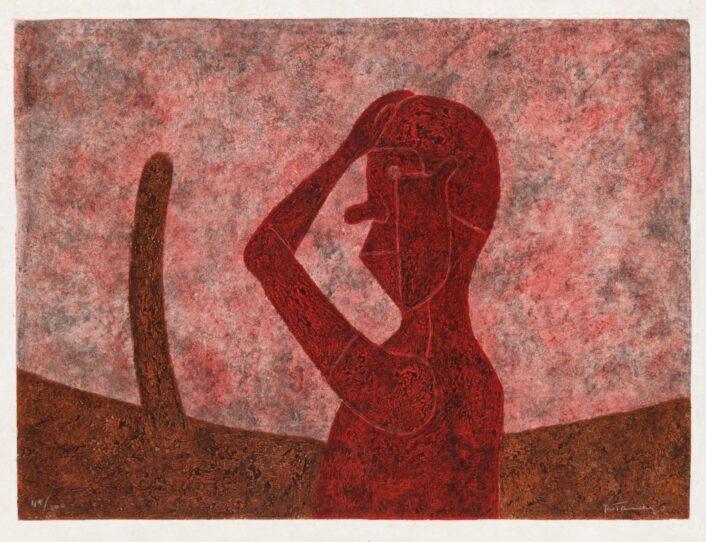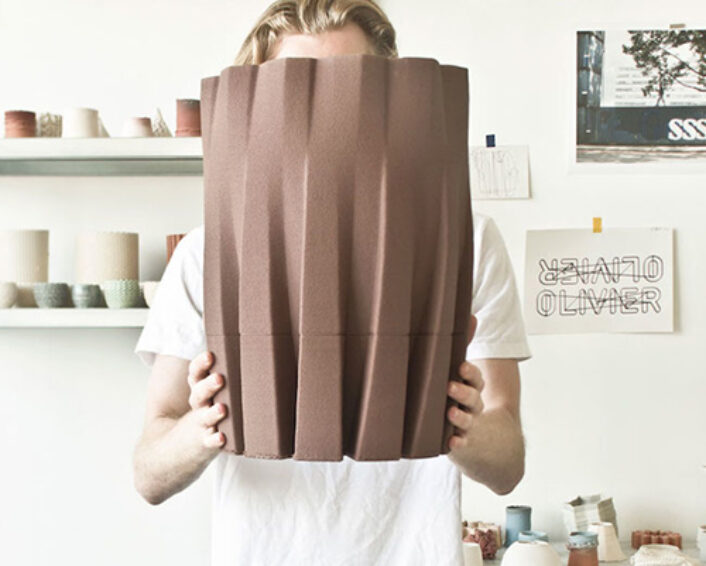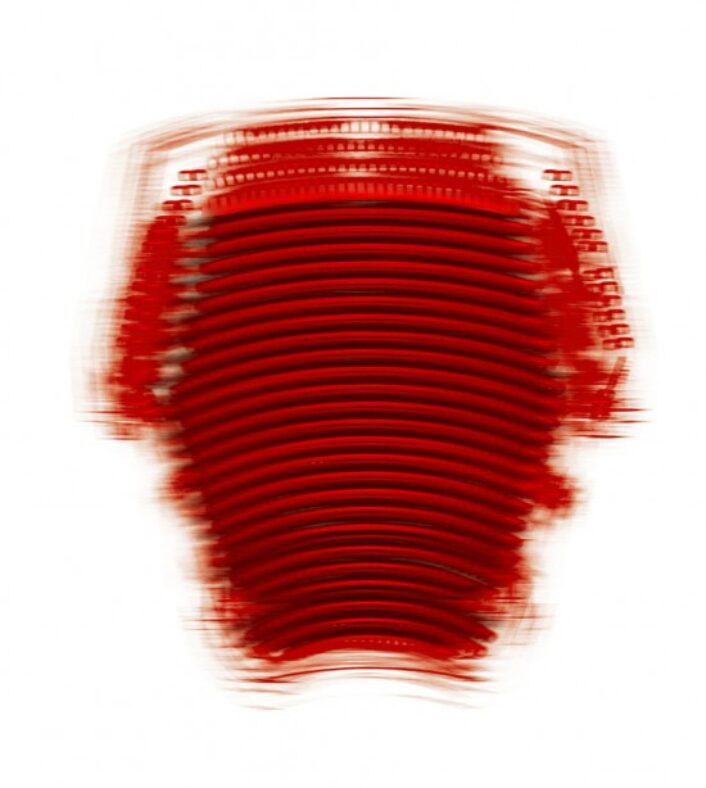Culture
Two Palms- the premier printmaking house
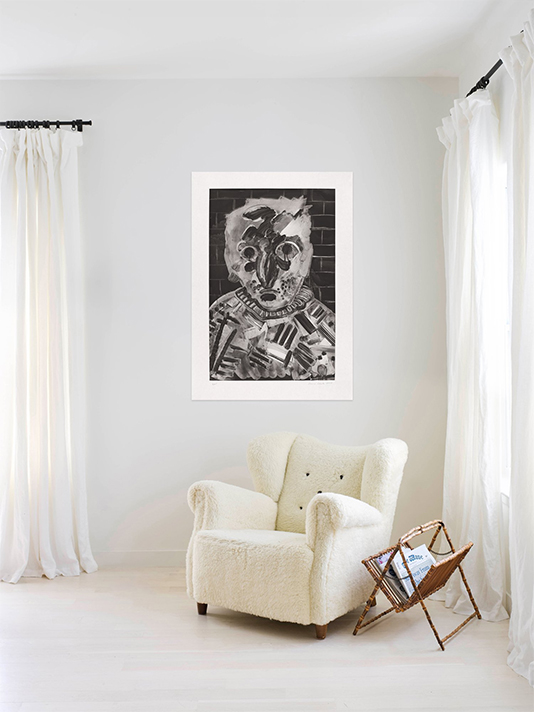
Dana Schultz’s “Bad Timing,” 2018. Etching with aquatint. From a signed, unframed edition of 20.
Image courtesy of: Platform Art
In 1994, David Lasry opened Two Palms; at the time, the studio had a near-obsolete hydraulic press that was designed to mold rubber under high vertical pressure. Luckily, Larsy’s wife, Evelyn, was able to help with the studio. The inspiration for Two Palms was thanks to the fact that Lasry was drawn to the (courtesy of Galerie Magazine), “collaborative nature of printmaking more than the solitary work of an artist.”
As the story goes, the hydraulic press was being delivered when one of Lasry’s Yale professors happened to walk by. The professor, Mel Bochner, spoke to Lasry and asked if he could become the studio’s first artist. For almost thirty years, artists at Two Palms have been experimenting with monotype and silk-screening. Those same artists also had the pleasure of working with the long-lost technique of Woodburytype, a process from the early 1860’s where layers of colored gelatin are pressed upon a sheet of paper in a mold.
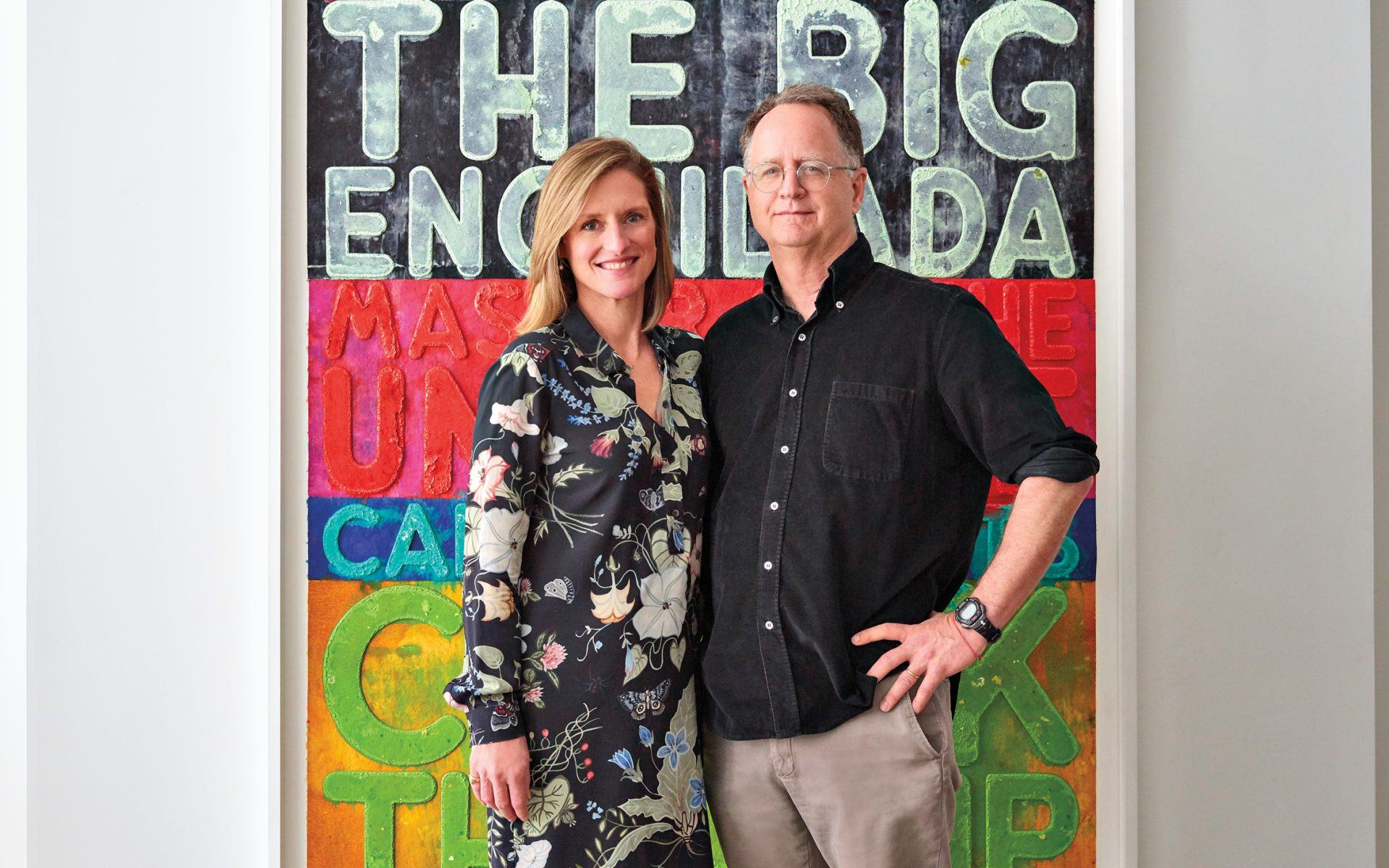
Evelyn and David Lasry in front of a Mel Bochner monoprint.
Image courtesy of: Galerie Magazine, photographed by: Thomas Loof
Currently, Two Palms still employs the Woodburytype technique. Developed by Walter Woodbury, this process has truly become (courtesy of Whitewall), “a holy grail of printmaking because no one could figure out how to make one.” Woodburytype has not been used since the 1800’s… thus, allowing Two Palms to be able to make prints that no one else in the entire world can make. The technique’s “tonal rendition, the liquid-like delicacy of its shadows and highlights, its supple surface relief texture, and permanence in the prints.”
In addition to the work produced via the Woodburytype, Two Palms produces monotypes and monoprints. The studio also publishes silkscreens, sculpture multiples, and etchings. Each technique truly produces a unique work of art.
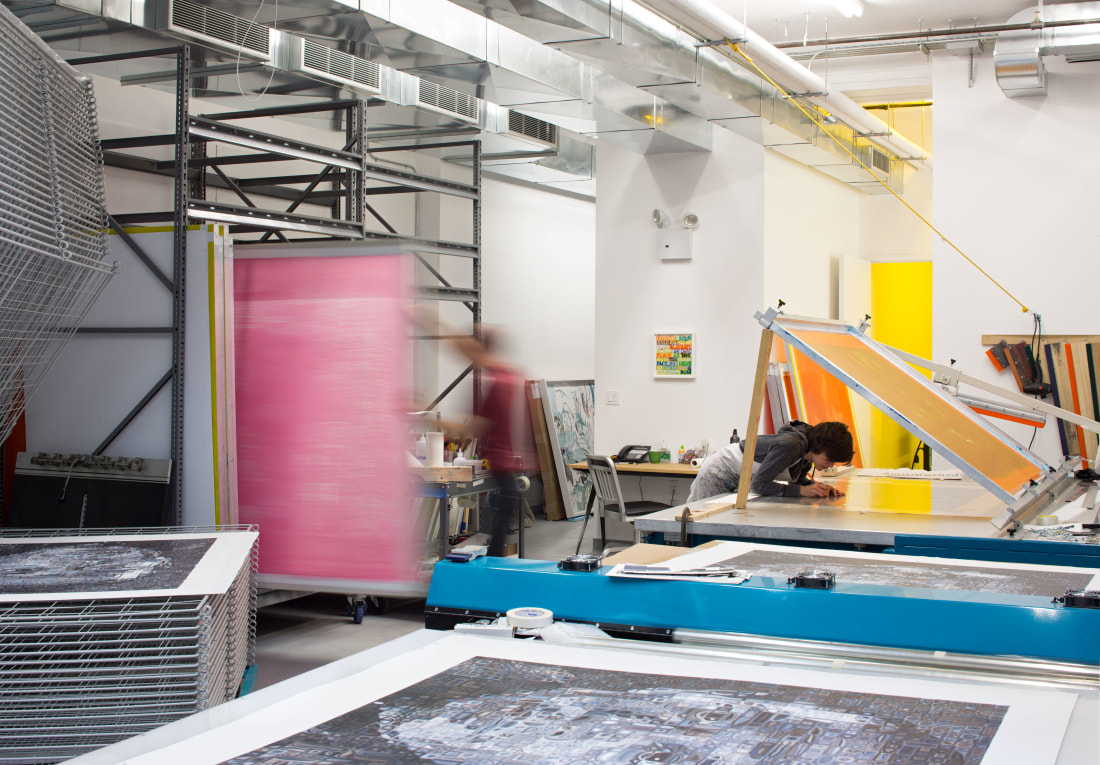
Where the magic happens…
Image courtesy of: Two Palms
Two Palms changed the notion of what a print can or should be… and how it is made. The printhouse has expanded its range of tools to include a massive hydraulic press and a laser cutter. By constantly embracing new technologies (which, for example gives paper an “enhanced physicality), the studio is able to churn out unique products.
Two Palms has had a longstanding partnership with some of the world’s most renowned artists including Cecily Brown, Chris Ofili, Chuck Close, and Elizabeth Peyton. Courtesy of Fine Art Multiple, “Two Palms are renowned for only working with a highly select roster of artists to ensure a focused and intense collaboration—striving to get under the “skin of the artist” to find potentialities the artist may not otherwise have realized were there.” We have had the pleasure of selecting and placing Two Palms’ prints by a few of these artists in our client’s residential interiors!
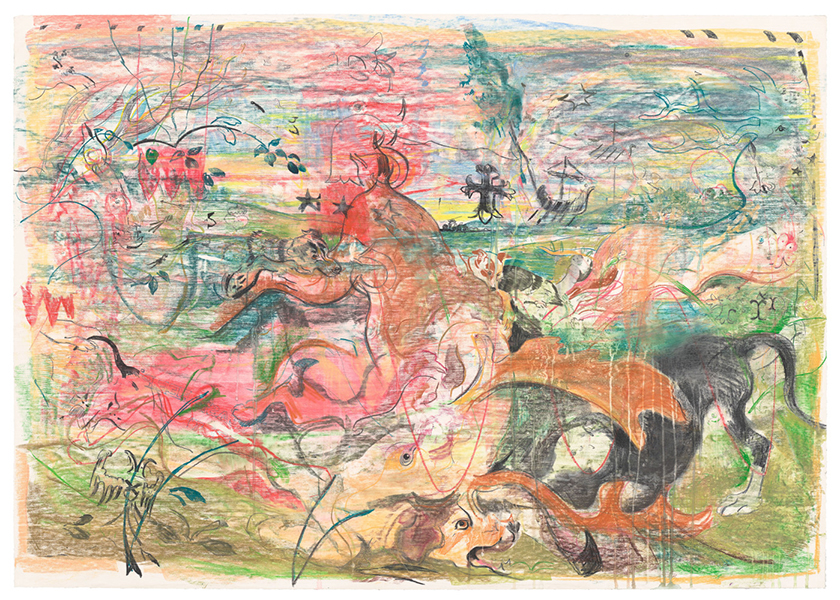
Cecily Brown’s “Untitled (The Calls of the Public Horn),” 2019. Monotype with watercolor and watercolor crayon on Lanaquarelle paper.
Image courtesy of: Two Palms
In 2020, Two Palms introduced “The Calls of the Hunting Horn,” a new series of Cecily Brown monotypes. This unique series was inspired by the art and artifacts found within Blenheim Palace, England. Brown was the first British artist to explore this realm of British heritage in the context of its imperialist past.
Referring back to paintings of hunts that are commonly associated with the upper crest of British society, Brown is especially drawn to the works of Frans Snyders, a 17th-century master. The rich, lush landscape is highlighted by dogs overpowering their prey. Courtesy of Two Palms’ website, “Coats of arms, ships at sea and symbols of the Church remind of an empire that no longer exists. In several works the bounty of the hunt emerges on a table overflowing with an abundance of game, the limp carcasses of deer hang, ready for a feast. In each richly referential piece, imagery emerges from layers of vivid color, slowly revealing itself to the viewer.”
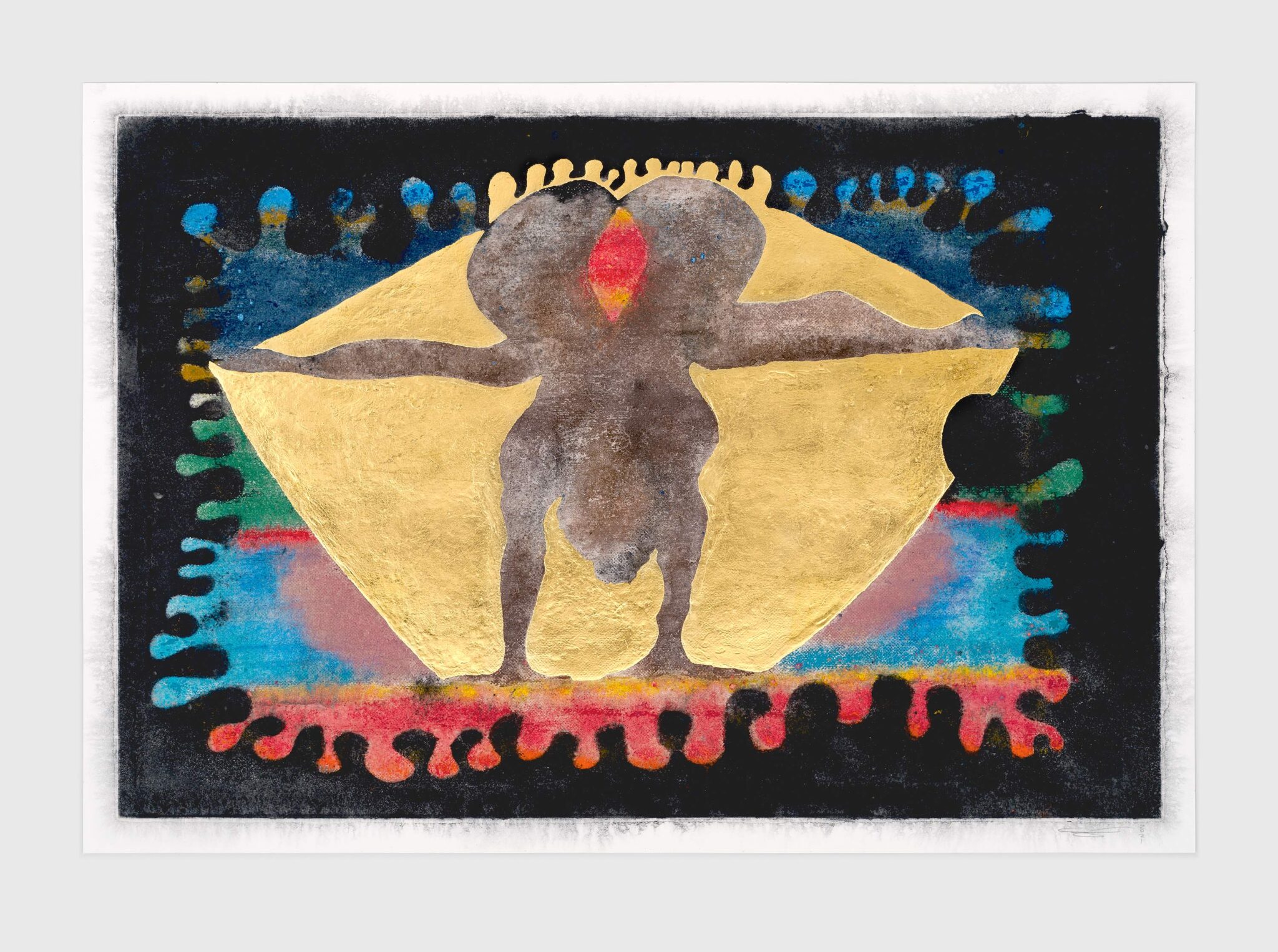
Chris Ofili’s “All-seeing eye,” 2021.
Image courtesy of: Fad Magazine
In January, David Zwirner Gallery announced a focus on prints and editions. “Unrepeated: Unique Prints from Two Palms” featured recent prints made by Two Palms artists. Included in the exhibition are works by Chris Ofili, Peter Doig, Terry Winters, Stanley Whitney, Cecily Brown, Mel Bochner, Marina Adams, Elizabeth Peyton, Dana Schutz, and Carroll Dunham. Clearly, the fine art world is giving monoprints a big thumbs up.
Lasry explains it best (courtesy of Fad Magazine), “Even as monoprints and monotypes have become more widely understood and circulated, we [at Two Palms] still find ourselves with the ability to be stunned by the results of our trial and error, interrupting the rote, systematized understanding of printmaking. The limitless material prospects offered by the creation of these singular prints allows us to tap into our shared curiosities and veer from tradition.”
